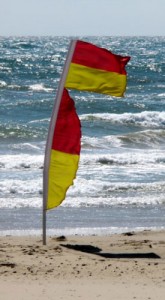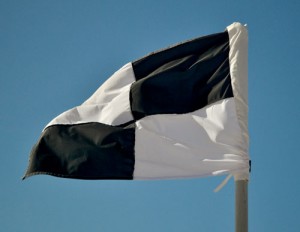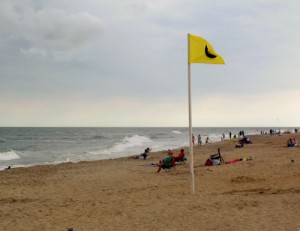Flags save lives on beaches

With summer here, many families are hurrying to the beach. To make sure they bring everything they need, they might compose a checklist: swimming suits, picnic items and beach toys. But the most essential item is a list of beach warning flags.
Around the world, beaches post flags of different colors to alert swimmers to conditions that might threaten their hot-weather fun. When memorized, the universal symbols are easy and quick signals that protect summertime travelers.
The global membership of the International Life Saving Federation agreed on standards for beach safety that emphasize the importance of warning flags. In its guidelines, the ILS writes that “flags are traditional devices for providing information to beach and water users which, if properly utilized, can be an effective element of a comprehensive safety system.”

As the ILS notes, flags “reduce language barriers” and, thereby, limit injuries and deaths from riptides, predators in the water, and other aquatic dangers. The organization also stresses that flags without lifeguards are useless. Unless someone is on hand to provide assistance and rescue, warnings have no purpose.
The warning flag system is simple because it’s based solely on color and design that can be learned by anyone, regardless of languages and whether they are at a lake in Michigan or a sea in Asia. That’s because the flag color system speaks a universal language:
 *Green, as with traffic lights, mean go swimming, but always with caution.
*Green, as with traffic lights, mean go swimming, but always with caution.
*Yellow means a “medium hazard,” so “weak swimmers” are advised to be cautious about going into the water.
*Red indicates a “high hazard” that all swimmers – regardless of their level of swimming skill – should heed by staying out of the water. A double red flag means the beach is closed.
*When a flag is purple, there are creatures in the water that swimmers should be aware of and perhaps avoid by staying on the strand. Those animals include jellyfish and stingrays. (Sharks are denoted by a red or double-red flag.)
*A flag split between red and yellow means that lifeguards are on duty. The expanse between those flags, notes the ILS, “indicates a designated area or zone along a beach or waterfront that is most closely supervised or patrolled by qualified lifeguards.”

*A flag divided into white and black warns swimmers that the area is open to surfers, so swimmers must take care.
*A yellow banner with a black ball on it says that surfboards are prohibited.
Knowing the flag system for water safety helps to ensure that summertime beaches are filled only with laughter and fun, not with ambulances.
